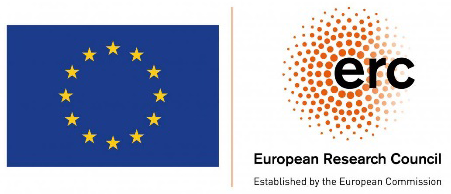
Hubs and clusters approach to unlock the development of carbon capture and storage – Case study in Spain
Xiaolong Suna, Juan Alcaldeb, Mahdi Bakhtbidara,b, Javier Elíoc, Víctor Vilarrasad,e, Jacobo Canalf, Julio Ballesterosg, Niklas Heinemannh, Stuart Haszeldineh, Andrew Cavanaghh, David Vega-Mazai, Fernando Rubieraj, Roberto Martínez-Oriok, Gareth Johnsonl, Ramon Carbonellb, Ignacio Marzanb, Anna Travéa, Enrique Gomez-Rivasa
- Department of Mineralogy, Petrology and Applied Geology, University of Barcelona, c/ Martí i Franquès s/n, Barcelona 08028, Spain
- Geosciences Barcelona (GEO3BCN-CSIC), Lluís Solé i Sabarís s/n, Barcelona 08028, Spain
- Department of Planning, Aalborg University, Copenhagen, Denmark
- Institute of Environmental Assessment and Water Research (IDAEA), Spanish National Research Council (CSIC), c/ Jordi Girona 18-26, Barcelona 08034, Spain
- Mediterranean Institute for Advanced Studies (IMEDEA), Spanish National Research Council (CSIC), c/ Miquel Marquès 21, Esporles, Spain
- Repsol Technology Lab, Calle Agustín de Betancourt s/n, Móstoles 28935, Spain
- Facultad de Derecho, University of Salamanca, Paseo Francisco Tomás y Valiente s/n, Salamanca 37007, Spain
- School of GeoSciences, University of Edinburgh, Edinburgh EH9 3FE, Scotland, United Kingdom
- TermoCal. School of Engineering, University of Valladolid. Paseo del Cauce 59, Valladolid 47011, Spain
- Instituto de Ciencia y Tecnología del Carbono, INCAR-CSIC, c/ Francisco Pintado Fe, 26, Oviedo 33011, Spain
- IGME – Instituto Geológico y Minero de España – Geological Survey of Spain. C/ Ríos Rosas 23, Madrid 28003, Spain
- Department of Civil and Environmental Engineering, University of Strathclyde, Glasgow, G1 1XZ Scotland, United Kingdom
Abstract
Many countries have assigned an indispensable role for carbon capture and storage (CCS) in their national climate change mitigation pathways. However, CCS deployment has stalled in most countries with only limited commercial projects realised mainly in hydrocarbon-rich countries for enhanced oil recovery. If the Paris Agreement is to be met, then this progress must be replicated widely, including hydrocarbon-limited countries. In this study, we present a novel source-to-sink assessment methodology based on a hubs and clusters approach to identify favourable regions for CCS deployment and attract renewed public and political interest in viable deployment pathways. Here, we apply this methodology to Spain, where fifteen emission hubs from both the power and the hard-to-abate industrial sectors are identified as potential CO2 sources. A priority storage structure and two reserves for each hub are selected based on screening and ranking processes using a multi-criteria decision-making method. The priority source-to-sink clusters are identified indicating four potential development regions, with the North-Western and North-Eastern Spain recognised as priority regions due to resilience provided by different types of CO2 sources and geological structures. Up to 68.7 Mt CO2 per year, comprising around 21% of Spanish emissions can be connected to clusters linked to feasible storage. CCS, especially in the hard-to-abate sector, and in combination with other low-carbon energies (e.g., blue hydrogen and bioenergy), remains a significant and unavoidable contributor to the Paris Agreement’s mid-century net-zero target. This study shows that the hubs and clusters approach can facilitate CCS deployment in Spain and other hydrocarbon-limited countries.

